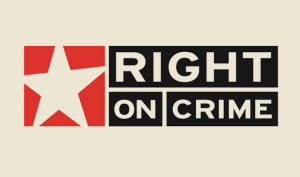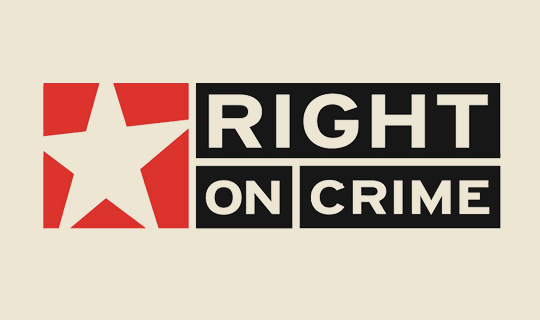 For years, many people have considered juvenile justice reform a dyed-blue plank in the liberal platform. However, deep in the heart of the red state of Texas, one conservative organization has adopted the issue as a major policy concern heading into the 2012 election season.
For years, many people have considered juvenile justice reform a dyed-blue plank in the liberal platform. However, deep in the heart of the red state of Texas, one conservative organization has adopted the issue as a major policy concern heading into the 2012 election season.
“The Texas Public Policy Foundation is a free-market, state-based think tank,” said Marc A. Levin, Director of the organization’s Center for Effective Justice. The Austin-based organization [texaspolicy.com], originally founded in 1989, implemented a criminal justice emphasis in 2005.
In 2010, the organization began its Right On Crime campaign, which Levin considers “a national platform for reform.” Several prominent conservative politicians and analysts -- among them, Newt Gingrich, Jeb Bush and William J. Bennett -- have all signed onto the campaign’s statement of principles.
The motto displayed on the Right On Crime website reads “fighting crime, prioritizing victims, and protecting taxpayers,” a creed which Levin reiterated when he said the organization’s primary aspirations are to “promote public safety, and also to do so in a cost-effective manner.” He also said the organization promotes “a focus on rehabilitation of youth and adults,” who he believes can “be put on a path to be productive citizens and positive contributors to our society.”
“Obviously, there have been some conservatives who, historically, have taken a ‘lock ‘em up and throw away the key’ approach,” Levin said. “But crime has been declining in the United States for 17 years in a row.”
Levin said that his organization advocates evidence-based practices and discourages incarceration “when it is not necessary.”
“If you incarcerate someone, it’s almost guaranteed they won’t be paying restitutions,” he continued. “They won’t be paying child support, and they’re obviously not going to earn any income.”
“Incarceration is necessary in some cases,” Levin stated, “but a lot of times, it’s a child welfare issue.”
Jeanette Moll, a juvenile justice policy analyst for the Texas Public Policy Foundation, added that “conservatives are making a case for reform. We’re really focused on reforming criminal justice, both on the adult side and the juvenile side, to ensure that it becomes the best system possible, so that it’s not only cost-efficient, but it’s producing effective outcomes.”
Levin, an attorney by trade, said that juvenile justice reform “starts with better school discipline policies.”
“In Texas, we had kids that were getting misdemeanor citations in school for chewing gum, and had to go to court,” he said. “It was getting out of control.”
Moll, a former legislative aide in the Wisconsin Legislature, said that juvenile incarceration is becoming an increasingly important issue as states face budgetary cutbacks.
“There’s a lot of systems aimed at incarcerating juveniles, or treating them, in ways that do not present good uses of tax payer dollars,” she said. “I think that it’s something that each state needs to consider for its own population, since every state has a unique population of individual offenders and different levels of funding.”
Since the Texas Legislature is not scheduled to convene until 2013, Right on Crime officials say the organization is looking to branch out into other states in the upcoming year.
“We’ve heard from a lot of our counterparts in other states, asking us to come over and help them do events, issue papers and do presentations for lawmakers on these correction issues,” Levin said.
Moll said that Right On Crime will be working with the Georgia Public Policy Foundation to raise awareness and interest in reforming juvenile justice policies within the state in 2012. “Georgia is a very interesting state,” she said, “because they’re currently looking at rewriting the juvenile code.”
Levin said that organization will also be looking at legislation in California, as well as examining several proposals in Washington, D.C.
Although Moll said the organization is in favor of juvenile justice reform, she still believes that there are instances in which juvenile incarceration is necessary.
“We’re in favor, for non-violent, first-time offenders, a certain category of juveniles, diversions from incarcerations, [such as] probation and access to treatment and other non-incarceration possibilities,” she said.
“Violent, serious and repeat offenders,” she continued, “do need to be incarcerated.”
Moll said that instead of being incarcerated, most juveniles arrested for drug -related offenses should be given the opportunity to partake of rehabilitative services.
“The most important thing there is realizing that some form of treatment is needed,“ she said. “The Texas Youth Commission does provide a substance abuse treatment program, so that’s encouraging information that even the juveniles that end up incarcerated will receive some form of treatment for their substance abuse issues.”
Moll said that Texas is a “fantastic example” of successful criminal justice reform, stating that since 2007, the number of juvenile lock-ups in the state have fallen by almost 60 percent. She said that community and evidence-based treatment are at the root of the state’s drop-off in juvenile incarceration figures.
A 2010 Texas Youth Commission report states that since 2007, the residential end-of-year population dropped from 4,800 inmates to 1,798 in three years time, with new commitments dropping from 2,738 to 1,481 during the same time frame.
“We have seen a big change in Texas,” Levin said. “Back in 2005 and 2006, there was something in the order of 5,000 youths in the Youth Commission, and now, we’re basically down to about 2,200 in lock-up. It’s very encouraging progress that’s been made, and there’s certainly more work to be done.”
Moll partially credits performance incentive funding for Texas’ reduction in juvenile incarceration numbers.
“The state sends grant funds to local county probation departments, who set up local treatment possibilities for juvenile offenders,“ she said.
Moll stated that the use of community-based treatment centers may lower the cost for Texas taxpayers from around $1,000 per day for incarcerated juveniles to just a little over $100.
Although such programs are implemented in only a few counties, she remains optimistic that community based treatment centers will become more and more common throughout the state. “We haven’t been able to compile comprehensive data, but the preliminary findings are very encouraging,” she said.
Levin also believes that there will be more of an emphasis on localized treatment in the upcoming years.
“I think you’re going to see a renewed focus on state and local efforts, which have been the bedrock of the juvenile justice system,“ he said. “It’s not really a federal issue, primarily.”
Due to cutbacks, however, he does believe that states are going to be pressured into “doing more with less” regarding their respective juvenile justice systems.
“And in order to do that,“ he said, “you are going to need a better picture of what the system is, what the programs are, what the results are and also which kind of youths are going into which program.”
Moll said that, throughout the decade, she sees juvenile justice reform becoming more of a convergent issue for conservatives and liberals.
“There’s always going to be attention to this issue from both parties, from both sides of the political spectrum,” she concluded.
“I think what has been different in the last few years is a new focus on evidence-based treatment, [as] in the past, the ‘70s, the ‘80s, the ‘90s, there wasn’t so much concern about whether or not the treatments and the programs we were using for juvenile offenders actually worked,” she said.
